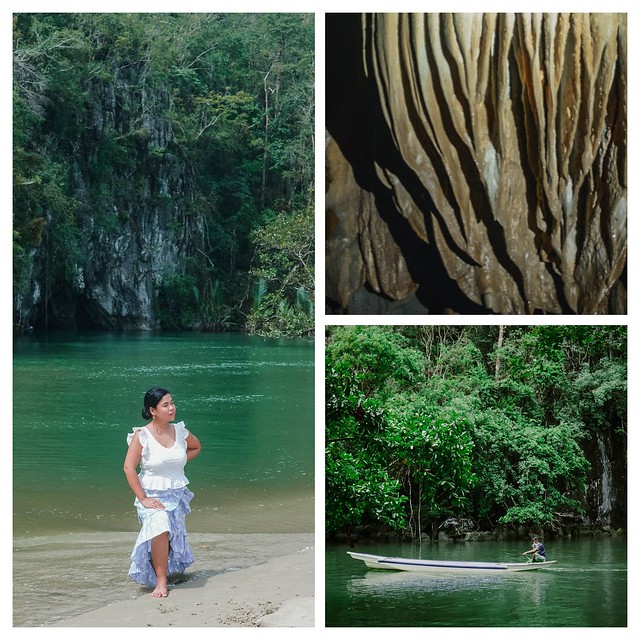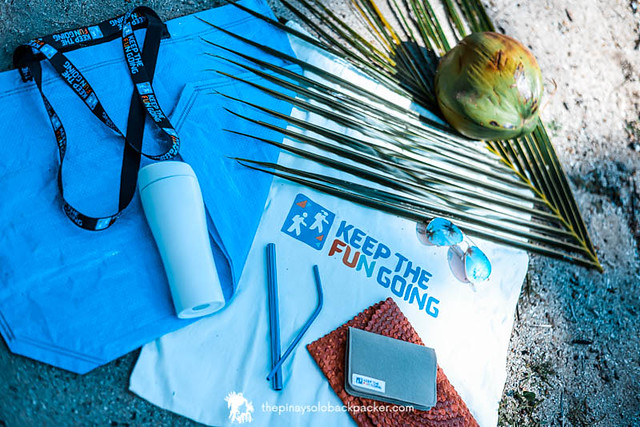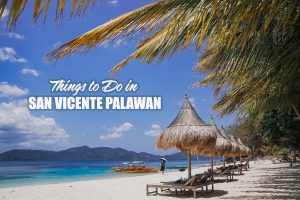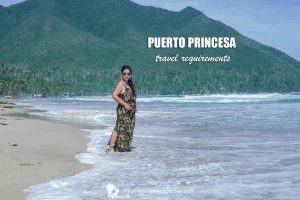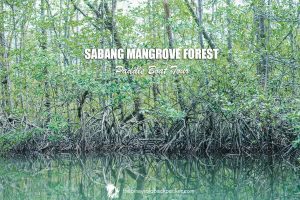Flanked by gorgeous marine reserves, vast pastoral lands, lush mountains and jungles, and sleepy coastal towns,Palawan is an impeccable travel destination for those seeking a refuge and oneness with nature. Dubbed as the “Last Frontier” of the Philippines, Palawan has made its mark on the world map as one of the best islands in the world, attracting hordes of tourists. While this is good for the local economy, the once laidback island is now in danger from irresponsible tourism practices, overdevelopment, overconsumption of natural resources, destruction of the environment, pollution, and disturbance of wildlife.
Thankfully, there are also ways to help minimize our environmental impact. As tourists, we can help contribute to a larger sustainable tourism movement through responsible tourism practices. What we do during our travels today is crucial in shaping the future of tourism.
TRAVEL BLOG CONTENTS
RESPONSIBLE TOURISM IN PALAWAN
Sustainable tourism and responsible tourism are often used interchangeably, but there is a difference between the 2 terms. Sustainable tourism refers to the long-term sustainability of tourism industry, the responsibility is shared among tourism stakeholders, companies, and political leaders. It aims to minimize the negative impacts of tourism activity while conserving resources to maintain their long-term sustainability. Whereas, responsible tourism are the specific actions and strategies that individuals, businesses, tourism stakeholders, and communities, practice to help minimize the negative impact of their tourism activity.
To be honest, when I dreamed of traveling around the Philippines over a decade ago, I was so focused on my goal that I failed to consider the footprints I’d leave to the environment. But my recent trip to Palawan, helped me understand more about sustainable and responsible travel.
Let me share to you my own experience in Palawan and some ways we can be a responsible traveler in our own little way. Let us always remember that the choices we make on how we spend our money during our travel can have a positive or negative impact to families, communities, wildlife, and destination we are visiting. After all, if we are privileged enough to travel, we should also be responsible enough to honor, care for, and protect the places we are visiting.
1.Plan your trip ahead and prepare.
I like taking impromptu trips from time to time, it excites me and often leads me to surprising paths. It allows me to embrace my sense of adventure and curiosity. There’s something about it that teaches me to trust my gut and live in the moment. However, when I want to save time and I want to travel safely and hassle-free, I prefer planning my trip ahead. I learned that if I want to travel responsibly, planning ahead is important- creating my itinerary, booking my accommodation and tours in advance, researching about the destinations, including its history and local cultures. It enables me to travel safely and minimize the damage to natural and cultural resources. So the next time you go on a trip, consider preparing and planning ahead to help you make informed decisions that will have a tremendous impact on the tourism industry. You can browse my detailed travel guides and itinerary on this blog to help you plan your trip.
2.Stay in an eco-friendly accommodation.
Supporting eco-friendly hotels and resorts is one way to contribute to responsible tourism. I understand it can be mind-boggling to find an accommodation for your trip, but choosing accommodations that have practices that help protect the environment and actively work with the local communities (e.g. employ workers from the village or nearby village, train their staff to improve their skills, etc.), it is worth it. Eco-friendly accommodations should be rewarded for their extra effort.
During our recent trip to Puerto Princesa, we stayed at Daluyon Beach and Mountain Resort, an award-winning eco-friendly resort blissfully located in Sabang, Puerto Princesa. What I like about this hotel is its effort to reduce its environmental impact, such as providing wood toothbrushes, ramping up recycling, and using 3 trash cans to encourage guests to segregate their trash, using reusable cutlery, and dishes, paper straws, water bottles, and using energy-efficient lighting. They also encourage guests to reuse towels and provide signs to remind guests to turn off the lights and faucet when not using, encourage donations to WWF, etc. Not to mention, the employees are village residents, which is beneficial for the community.
Sabang area is a good base when in Puerto Princesa because it is within walking distance to Sabang Port, the jumping-off point to Puerto Princesa Underground River. It is also a stone’s throw away from some tourist spots so we were just walking to Sabang beach, Sabang Mangrove forest, and the zipline on the beach to help minimize the impact on the environment. I did enjoy our leisurely stroll as the rugged road there is fringed by swaying palm trees exuding a laid-back, tropical island vibe.
Daluyon Beach and Mountain Resort: BOOK HERE
3.Minimize your carbon footprint.
If you are steadfast to helping preserve the environment, choose public transportation instead of renting a car, it’ll help minimize your carbon footprint. Travel time may take longer, but it’s a small sacrifice for Mother Earth.
Another way to help reduce our carbon footprint is by incorporating local adventures on your travels, such as, walking in unexplored corners of your destinations and visiting green parks. Take Balayong People’s Park, a new urban tree park in Puerto Princesa City. It aims to promote a greener surrounding in the city and planting endemic trees such as Nara, Ipil, Kamagong, etc. Baker’s Hill is another green-friendly park in Puerto Princesa. It is home to many plants and giant ferns. I was really excited to see giant staghorn ferns hanging beautifully from towering trees there. Meanwhile, the Viet Ville Restaurant in Puerto Princesa, which used to be home to 2,000 Vietnamese refugees, remains a community enveloped by greenery and age-old trees.
4. Dispose your trash properly.
Don’t you love it when the place you are visiting is trash-free? Dispose your trash properly whenever traveling. If you can’t find a trash can, take your trash with you and dispose it once you find a trash bin. If you’re hiking in the mountains or going island hopping, bring a reusable or biodegradable trash bag and take your trash with you to the mainland, until you find a trash bin and dispose properly.
5.Practice plogging, plalking, and pliking on your travels.
You often hear the principle “Leave No Trace” when traveling, but most likely during your trips, you’ll encounter trash. And that’s saddening. We must consider the impacts we leave behind during our trip because they will affect the community, water, and wildlife of the places we are visiting.
We can help keep the tourist destination litter-free when traveling by plogging, plalking, or pliking. PLOGGING is a sustainable initiative that originated in Sweden, which combines running and jogging with picking up trash. PLALKING is walking while picking up litter and PLIKING is biking and litter clean up. Let’s make them a new trend in traveling!
I’m glad that during my recent Palawan trip, I didn’t encounter the usual trash I see when traveling. However, the beach is swamped with sargassum (seaweed) every morning. Seaweed like seagrass play a major role in the ecosystem. But thick mats of floating sargassum can also kill surface-breathing wildlife such as turtles and dolphins as they become impenetrable and prevent these animals to go to the surface to breathe. They can also be trapped in fishing nets making it hard to catch fish, and may prevent fishermen from launching their boats as they get trapped in propellers. Stinking dead seaweed washed up on shores can also attract insects, pose risks to human health, and may hinder beach-goers, an economic pillar to many coastal communities. You can help by cleaning up the shore with dead sargassum. Then, the collected dead seaweed can be turned into plant fertilizers.
6.Support local conservation efforts and the local economy.
If you’re enjoying a destination your visiting, why not give back to the local economy? Spend a portion of your travel money on local businesses.
Buy locally-made goods or souvenirs, visit the local market, volunteering in a tree-planting drive, or animal shelters (if there are any). Dine in local restaurants and cafes, purchase arts and paintings from local artists, etc.
During our trip to Puerto Princesa, we visited Binuatan Creations, a shop that manufactures handloom woven bags, home decors, placemats, etc. from natural grasses and fibers. If you’re looking for a souvenir to take home to your family and friends, this is the place to be. You can also try your hand at hand weaving placemats with the guidance of local talented weavers.
And speaking of supporting the local economy, when choosing tour providers, and destinations, consider the ones that work to protect the environment, provide financial benefits and empowerment to local communities and contribute to the conservation of local resources. Hiring local guides that are trained to provide accurate information also helps.
Thankfully, we were able to experience the two highly recommended eco-tourism and community-based tourism destinations in Puerto Princesa – the famed Puerto Princesa Underground River and the Sabang Mangrove Forest.
PUERTO PRINCESA UNDERGROUND RIVER TOUR: RESERVE HERE
The Puerto Princesa Subterranean River National Park is a must-visit when in Palawan. This impressive cave system features jaw-dropping stalactites, stalagmites and several chambers. The park boasts of limestone karst landscapes, well-preserved age-old forest, and varied wildlife. It is listed as a UNESCO World Heritage Site and New 7 Wonders of Nature. This protected park is a great example of sustainable tourism in the Philippines. The property is covered under the National Integrated Protected Area System (NIPAS) to ensure its legal protection and conservation. Puerto Princesa River National Park’s tourism program aims to enhance visitor’s experience with nature while protecting the natural values.
After our trip to the Puerto Princesa Underground River, we also experienced the Sabang Mangrove Forest Tour, just walking distance from Sabang Wharf. The Sabang Mangrove Forest was founded to empower local communities, provide additional income to residents, foster environmental awareness, and provide sustainable tourism activity that minimizes negative impact to the environment. I have a detailed blogpost about it (see link below), if you want to know more about it.
ALSO READ: SABANG MANGROVE FOREST TOUR
7.Visit agri-tourism farm.
We also visited Yamang Bukid, an agri-tourism farm. It was founded to make farming both sustainable and profitable, and help farmers to be financially independent. Interestingly, Yamang Bukid helped eliminate illegal logging activities in the village by transforming former illegal loggers to farmers. The agritourism farm also provides school allowance for the kids of their farmers and farm employees, and they also support high school and college scholars. Apparently, Yamang Bukid can fund all this because they have a profitable business manufacturing herbal teas and supplements as well as 2 restaurants where raw materials are organically and ethically sourced from their farm.
As someone who loves plants and gardening, Yamang Bukid is heaven for me. Unfortunately during our visit, we learned that the farm was devastated by Typhoon Odette. They also suffered great loss during the pandemic since there were no tourists. Yamang Bukid is now starting from scratch, so when you travel to Puerto Princesa, don’t forget to drop by, dine in, plant and donate seedlings, and take home their organic products as souvenirs. If you’re into farming, you can even take up short courses in organic farming, vermicomposting, etc. This way, you’ll gain a new experience and at the same time help the farmers and local community.
8.Respect wildlife.
Many of us gets excited whenever we encounter wildlife. But we should not forget to be respectful to them. Do not disturb wildlife or plants just you get a better look or a better photo, instead, observe quietly from a distance so you won’t scare them. Avoid joining large noisy group tours, opt for smaller tour groups to minimize your impact. Do not feed, touch, get too close or pick up wild animals. Feeding animals is pretty common in the country (e.g. feeding fishes during snorkeling), but is it generally a bad idea. Human food is not heathy for wild animals, and if these animals get accustomed to people feeding them, they may lose their fear of humans and can become aggressive.
9.Be respectful of local cultures, traditions, and etiquette.
We are just visitors, therefore, let’s be respectful of the local culture, religion, and traditions. Research about the dress code, especially if you are visiting temples and other religious sites, as well as cultural sites. Observe how the locals dress, and take your cues from them. Never take offensive pictures. Ask permission when taking pictures of indigenous people, and locals in general. Every country has different rules for etiquette, a quick Google search should give you some basic information on what is considered taboo or rude in certain country or places. Not knowing these rules can also harm you, so best to be prepared before your travel. If you’re unsure, ask the locals.
10.Bring reusable straw, utensils, water bottle, etc.
As mentioned above, it’s important to plan your travel ahead, to help minimize your negative impact to the environment. Planning your trip ahead isn’t limited to creating itineraries, booking accommodations and tours in advance, it also entails planning to decrease your plastic usage during your trip. Single-use plastics like water bottle, straw, plastic bag, etc. are often the trash that I see during my travels. You can help reduce your plastic trash by bringing your own refillable water container, it will also save you a few bucks because instead of buying bottled water every time you are thirsty, you can ask to refill your reusable bottle with filtered water from your hotel, restaurant, etc. As much as possible, avoid using straw, if you really need one, bring other alternatives such as bamboo, metal, or paper straw. You can also help the environment by dining in instead of taking out your food. Carrying your own cloth or jute shopping bag also helps minimize the use of single-plastic bag. I’m so used to this because in our town, plastic bags are banned from stores, supermarket, and grocery. And lastly, skip the free travel-size shampoos, soaps, and lotions provided by your hotel or resort, instead, bring your own toiletries.
By the way, Department of Tourism has an ongoing campaign called “KeepTheFunGoing” where people are encouraged to do simple and fun gamified sustainable challenges such as “zero-waste warrior”, “certified foot soldier”, “restourism advocate challenge”, and “eco staycationer”. For more information about the challenges and more ways to be a sustainable tourist, visit https://philippines.travel/saveourspots







